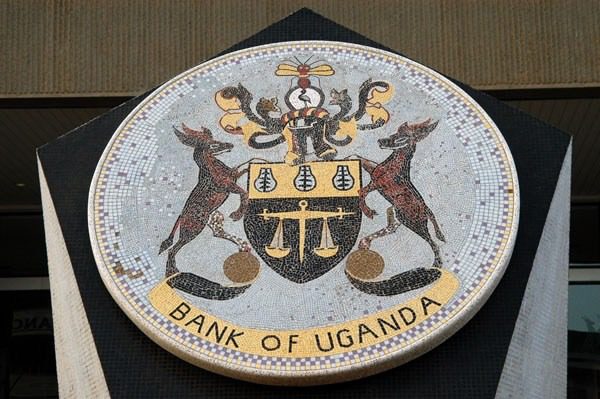Global Issues
Uganda: Recent Banking Trends and Outlook -By Rafiq Raji

“Financial sector stability: managing risk in a growing and fast changing environment”: This was the theme at this year’s annual conference of the Uganda Bankers’ Association (UBA) held in mid-July. Considering that only last year, the conference’s theme was “the future of banking”, the current cautious drift is a significant shift. This is not to suggest that there is that much to worry about. After all, as recently as about mid-July, in an interview with Bloomberg, Bank of Uganda (BoU) deputy governor Louis Kasekende assessed that “most banks [in Uganda] are meeting their capital requirements and non-performing loans as a percentage of total credit has improved to about 5 percent.” And that “chances are that [the BoU] might have to revise [its] stance on monetary policy.” Inflation rose most recently to 2.2 per cent in June from 1.7 per cent a month earlier. Relative to a 2017-high of more than 7 per cent in May, this is still quite low. So the BoU would be justified in easing monetary policy further, after keeping its benchmark rate steady at 9 per cent in June 2018; albeit it cut interest rates by 50 basis points to 9 per cent in February.

Stronger Supervision Required
Fears of bank failures and the central bank’s seeming preferred approach of liquidation remain rife. In this regard, BoU governor Emmanuel Tumusiime-Mutebile remarked at the UBA conference that, “Most of the banks, which have failed in Uganda during the past 20 years, either had very little franchise value or were too heavily insolvent to be sold on a going concern basis or merged with another bank”. Memories are still fresh about the defunct Crane Bank, which was taken over by the BoU in October 2016. Hitherto, it was Uganda’s third largest local bank, and according to the International Monetary Fund, it accounted for about 10 per cent of private sector lending and total banking system asset in the country. Had there been stronger supervision by the BoU, the IMF believes that the bank’s liquidation, and those of four others since 2010, could have been prevented.
Credit Extension To Improve, NPLs Lower
According to the World Bank, domestic credit growth was about 3.5 per cent in the first eight months of the 2017/18 fiscal year; a deceleration from 8.5 per cent during the same period the year before. The World Bank estimates that financial year (FY) 2017/18 credit growth should be about 13.4 per cent, however. If the forecast materialises, it would be a significant improvement from 2.6 per cent in 2016/17. Even so, it would be far below potential. As recently as 2014/15, domestic credit growth was 32 per cent. For credit to the private sector, growth was about 5.5 per cent in the first eight months of 2017/18; little changed from the 5.7 per cent recorded for the full year in 2016/17. The World Bank estimates, however, that private sector credit growth in FY 2017/18 should more than double the previous year’s at 12.5 per cent. That said, commercial loans remain quite expensive to acquire. That is even as the average lending rate decreased to 21 per cent from closer to 25 per cent over the past two years; no doubt incentivised in part by monetary policy easing by the BoU. With deposit rates also declining to about 3 per cent in February from about 5 per cent two years ago, net interest margins remain high. Overhead costs account for a great deal of the margins, says the World Bank; perhaps the second highest in East Africa (ex-Rwanda). This is one of the key reasons why interest rates remain sticky at currently still high levels. Due diligence costs a great deal as well.
Thankfully, there have been fewer problematic loans lately. Non-performing loans to gross loans stood at 5.6 per cent in December 2017. Only six months earlier, they were adjudged to be about 6.2 per cent. And just a year before, NPLs were 8.3 per cent of gross loans. The level could be better, still. In 2015, NPLs were just 4 per cent of total loans. As headwinds weighing on sectors like agriculture, construction, trade and commerce, where the IMF found NPLs to be concentrated a year ago, are beginning to abate, the outlook suggests there should be fewer problem loans; over the next year, at least. Relative peace is returning to South Sudan, a key trading partner. An ambitious infrastructure programme should also boost construction. Justifiably, the BoU assesses Ugandan banks to be safe and sound; having also all met the minimum core capital requirement of 8 per cent of risk weighted assets (end-June 2017).
There are concerns about government interference at the BoU, however. Stakeholders have also called for a cultural shift in the industry where instead of focusing on how to ensure the business of the borrower succeeds, bankers’ primary interest is the collateral. Perhaps, a wider adoption of agency banking and the use of alternative data in the assessment of creditworthiness would reduce how much it costs banks to service customers, some suggest. With cost-to-income ratios of over 70 per cent, Ugandan banks could use all the creative ideas they can get. One idea mooted by the World Bank to improve and reduce the cost of credit extension is for the authorities to enhance “the coverage of the credit reporting system through credit bureaus”, which only covers 6 per cent of the population currently; a far cry from 30 per cent in Kenya and 20 per cent in Rwanda. In any case, progress is being made in the adoption of alternative financial services like Islamic banking and cheaper and more inclusive channels like mobile money. In regard of the former, regulations were approved by the government in February. Thus, Ugandan banks would be able to provide Islamic banking services soon. And for the latter, 51 per cent of Uganda’s adult population now own a mobile money account, from 35 per cent in 2014 – a win for financial inclusion. But the introduction of a tax of 0.5 per cent on mobile money transactions in early July, albeit reduced from 1 per cent when it was first announced, could erode further progress in this regard.
Rafiq Raji, a writer and researcher, is based in Lagos, Nigeria. Twitter: @DrRafiqRaji
An edited version was published in the Q3 2018 issue of African Banker magazine.


















